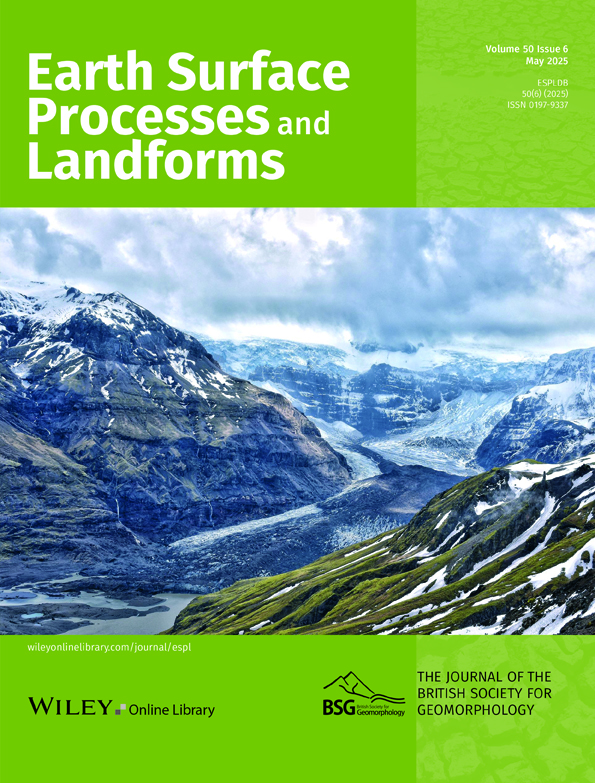Landslide monitoring from point cloud sequence using stereo feature matching
Abstract
In this study, we proposed a methodology for monitoring the deformation effects of the Baijiabao landslide in Zigui County, Yichang, China, within the Three Gorges Reservoir Area, using terrestrial laser scanning (TLS) technology. The primary objective is to refine and enhance the accuracy of point-cloud alignment techniques through the automated fitting of multidimensional stereographs. This method aims to improve early warning systems and monitoring capabilities for geological hazards by generating three-dimensional (3D) point cloud models that illustrate landslide displacement across various time intervals. Owing to the non-stationary nature of the landslide area, we applied the random sample consensus (RANSAC) algorithm to fit the point cloud to bridge piers outside the landslide zone. The centre points of these piers were then calculated, and a displacement rotation matrix was derived using the coordinates of the fitted three-dimensional model of the bridge piers. This matrix is then employed to align the landslide region, which markedly diminishes errors related to point cloud registration and improves the precision of the displacement computations. Following point-cloud preprocessing, the obtained data were subjected to graphical fitting onto stable non-target regions using the RANSAC technique. The centroid of the fitted point cloud was computed to align the target landslide area with this reference datum. After alignment, the initial phase point cloud was reconstructed as a three-dimensional model. Displacement disparities between the subsequent phase model and reference were computed using the reconstructed model as a basis using the cloud-to-mesh (C2M) method. The resulting discrepancies were visualized using colour rendering techniques. The displacement disparity model was colour-coded to highlight the overall displacement trends and deformation intensity in the Baijiabao landslide. The landslide exhibited a distinct blocky blue distribution on the nephogram near Zixing Highway, indicating significant deformation and settlement in the area. Further examination through specific deformation displacement maps showed that the average deformation value within the area was −0.2041 m. The displacement results were validated using the Global Navigation Satellite System (GNSS) monitoring station at the Baijiabao landslide. The resulting displacement and deformation patterns were illustrated using a displacement map, enabling rapid identification of landslide activity and issuance of timely warnings. Moreover, this improves the precision of TLS in landslide monitoring, making point-cloud alignment-based monitoring technology more feasible and efficient.
CONFLICT OF INTEREST STATEMENT
The authors declare that they have no conflict of interest.
Open Research
DATA AVAILABILITY STATEMENT
The data and materials supporting this study's findings are available from the first and corresponding author, Yunfeng Ge, upon reasonable request. The codes supporting this study's findings are also available from the first and corresponding author upon reasonable request.




